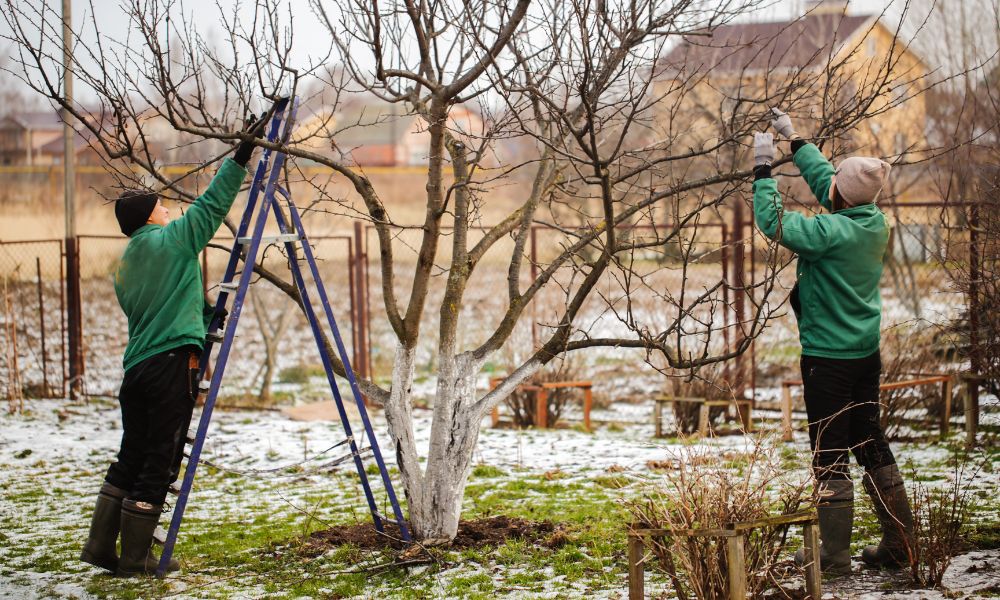As winter approaches, it’s important to think about the health of your trees. Just like other parts of your property, trees need some extra care and attention when preparing for the colder months of the year. Homeowners can ensure the longevity and health of their trees come springtime by taking proactive measures and giving their trees additional care during winter. Here, we’ll delve into what homeowners should know about winter tree care.
Trimming and Pruning
Winter is the perfect time to prune your trees. It’s easier to see the tree’s structure without all the foliage, making it easier to identify dead, diseased, or damaged branches. Pruning will keep your trees healthy by promoting good structure, better nutrient retention, and improved sunlight penetration. Also, early trimming in the winter can prevent delays in springtime growth. However, it’s important not to over-prune your trees. Over-pruning can create an imbalance, cause stress to the tree, and limit its ability to grow.
Watering Your Trees
It’s also crucial to ensure your trees get enough water during the winter months. Although the soil may freeze, trees still require water for survival. Homeowners should water their trees before temperatures drop below freezing and prior to major snowfalls. Watering during the warmest parts of the day allows the trees to absorb the water before it freezes and prevents damage to the roots.
Mulching for Protection and Moisture Control
Mulching is another essential aspect of winter tree care homeowners should know. Mulch provides the tree with vital nutrients and acts as an insulator and protector of the tree’s roots from the harsh winter temperatures and excessive water loss. Consider applying a three to four-inch layer of mulch around the base of your trees before the first big snowstorm. You should avoid piling the mulch against the tree trunk, as doing so can cause fungi to grow and harm the tree.
Protecting Against Winter Damage
Since winter weather can be harsh, homeowners should take steps to protect their trees from ice damage, snow pressure, and salt damage. Shake off accumulating snow from the lower branches and use a broom to brush away any ice to prevent injury. Avoid applying rock salt near trees to ensure you don’t accidentally damage them. Consider using salt alternatives, such as sand or sawdust, when de-icing or removing snow.
Consulting a Professional
Winter tree care can sometimes be challenging, so, when in doubt, consult a certified arborist. A certified arborist can help homeowners assess the health of their trees, suggest winter care tips, and recommend services tailored to their specific needs. Additionally, they can safely prune and remove trees should you need these tasks performed.
Winter tree care may sound like a daunting task, but it’s vital to the health and longevity of your trees. Make sure you consult a professional, like our team at Watts Tree Service, for advice and additional assistance with keeping your trees healthy. We offer a range of tree care services that feature everything from pruning to disease prevention to removal if necessary. With a little bit of care, your trees will enter Spring feeling healthy and rejuvenated.
Last modified: April 25, 2025

